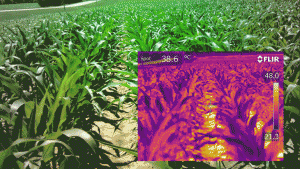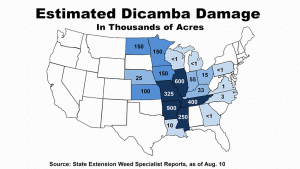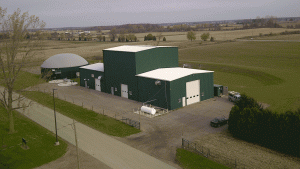Glyphosate-resistant waterhemp
WEED DETECTED IN SOUTHERN ONTARIO
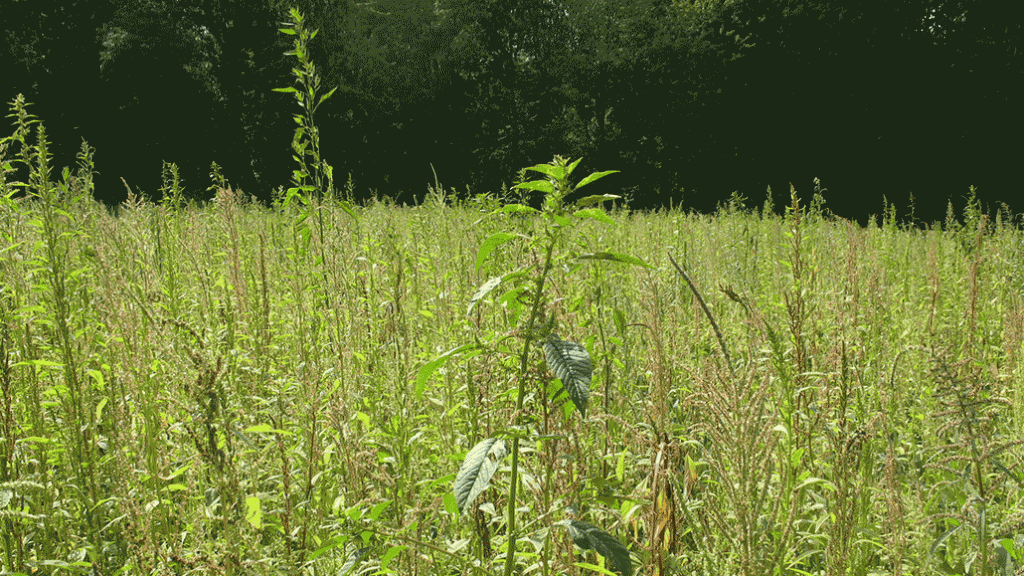
GLYPHOSATE-RESISTANT WATERHEMP is in southwestern Ontario and it’s occurring at densities that are resulting in substantial yield losses says weed management expert Dr. Peter Sikkema.
Sikkema, an applied research scientist and professor at the University of Guelph Ridgetown Campus, says glyphosate-resistant waterhemp is on at least 40 farms throughout three counties in the southwest.
“What started out as a localized problem in one field in Lambton county in 2014 is now a problem in Essex, Kent, and Lambton Counties,” says Sikkema. “Substantial yield losses have been documented in soybean fields, but it is also a problem in corn and wheat.”
He says in fields with high densities where no weed management tactics are employed, there is almost 100 per cent yield loss. In some fields, Sikkema reports there are densities of greater than 1,000 glyphosate-resistant waterhemp plants per square metre.
Waterhemp certainly isn’t new to the province, but it was only in the summer of 2014 that glyphosate resistance was detected and identified — this after a sales representative from one of the agricultural product companies brought the plant to Sikkema. In partnership with a lab at the University of Illinois, the weed species was confirmed and the mechanism of resistance to glyphosate was identified as gene amplification — the weed has six to 11 extra copies of the EPSPS gene in it, making it resistant to the herbicide.
Although it’s found in 19 U.S. states, glyphosate-resistant waterhemp has only been confirmed in southwestern Ontario in Canada to date.
Glyphosate-resistant waterhemp is in the Amaranthus family and looks very similar to various pigweed species. And that, says Sikkema, is part of the problem.
“It’s fairly easy to misidentify waterhemp as some of the more common pigweed species such as redroot pigweed, green pigweed, or smooth pigweed,” explains Sikkema.
It’s likely, then, that some growers may not be aware they have this glyphosate-resistant weed on their farm.
FURTHER RESEARCH
Since glyphosate-resistant waterhemp was first identified three years ago, Sikkema and his team have conducted several trials. New this year is a long-term, nine-year weed management research study that several partners, including Grain Farmers of Ontario, are supporting. Sikkema says that the focus of the research is quite straight-forward: to develop solutions for Ontario farmers to help manage glyphosate-resistant waterhemp in corn, soybeans, and wheat.
“Our goal is to approach 100 per cent weed control of this weed species and reduce the number of seeds in the seed bank over time,” he explains.
The study has been established across two farms in southwestern Ontario and is currently in its first year. Sikkema says his team has put together a very diverse weed management program and is looking at things like diverse crop rotation, the inclusion of cover crops after winter wheat combining, reduced row widths in soybeans (from 30 to 15 inch rows), and at various herbicides from many different families in terms of the modes of action to address this weed.
“And, I must say that preliminary results look encouraging,” he adds.
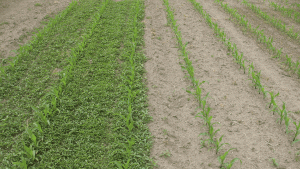
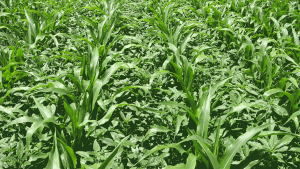
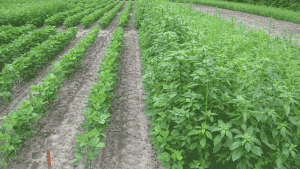
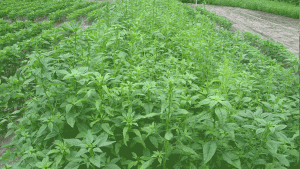
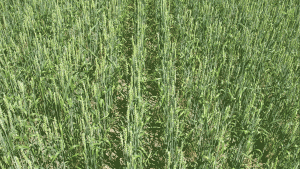
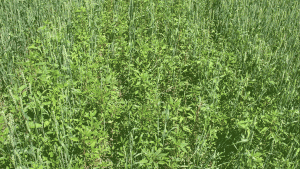
As a quick example, Sikkema says although they are interim results and need to be verified with future research, the pre-emergence application of either Lumax or Acuron to corn provided the greatest results with over 90 per cent control; post-emergence, Marksman provided greater than 90 per cent control, while a Callisto and Atrazine combo provided nearly 100 per cent control.
Still, as Sikkema says, it can safely be assumed that glyphosate-resistant waterhemp came about because of the overreliance on glyphosate for weed management. And, it highlights the importance of a long-term diversified weed management program.
“I encourage growers to have diversity in their crop production systems including multiple crops, different herbicide modes of action, narrower rows, the use of tillage at strategic points in their long-term rotation, and the inclusion of cover crops,” says Sikkema. “Growers should employ multiple tactics to manage these weed species instead of relying exclusively on herbicides for weed management.”
This project was funded in part through Growing Forward 2 (GF2), a federal-provincial-territorial initiative. The Agricultural Adaptation Council assists in the delivery of GF2 in Ontario. •























